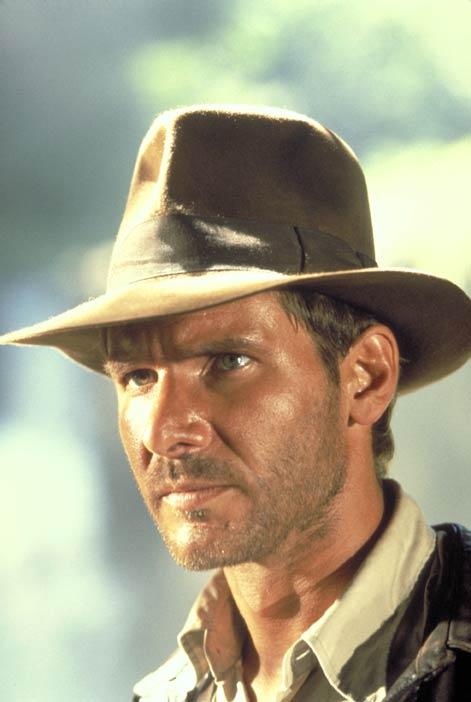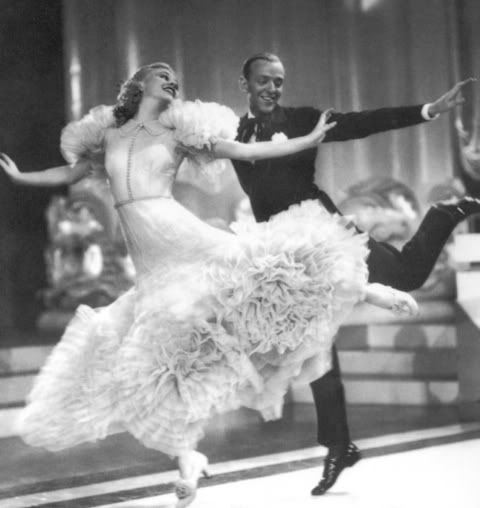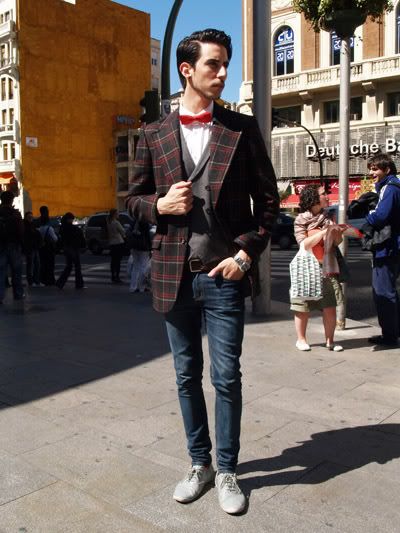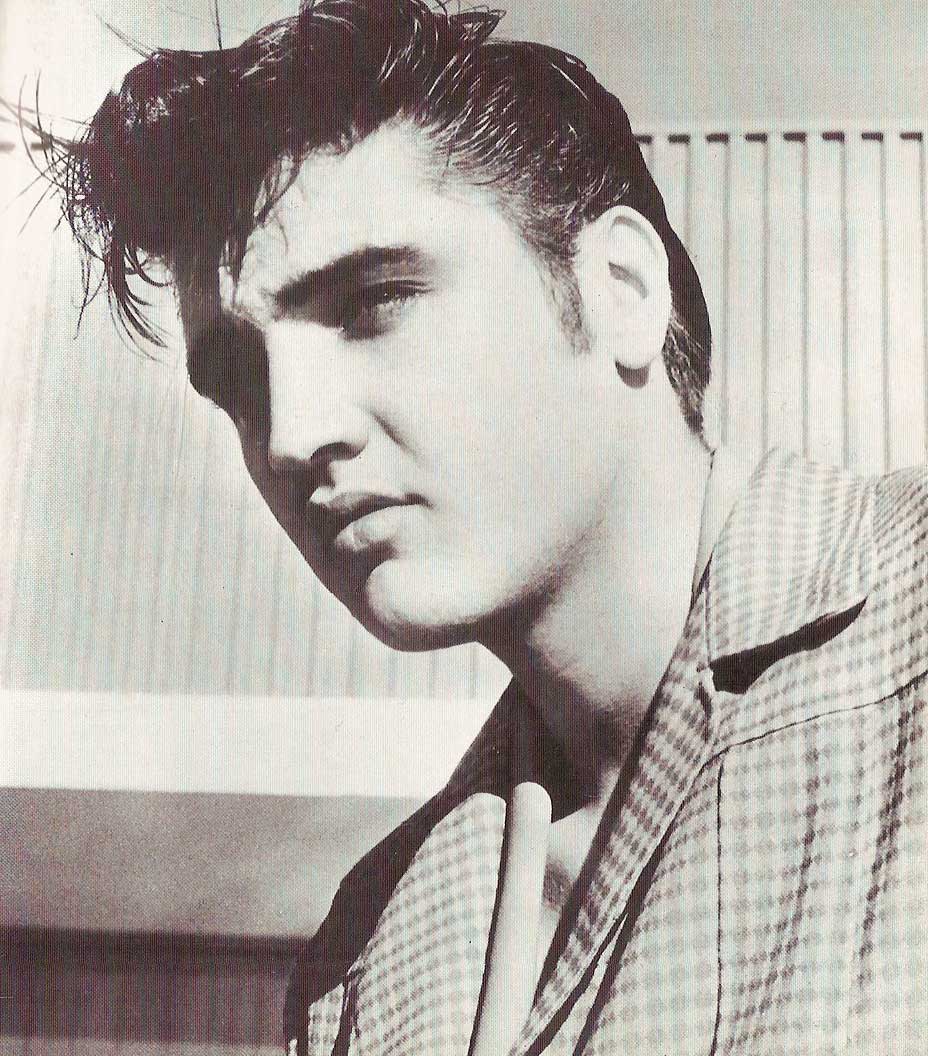
How can there be a Fred Astaire without a top hat? Or a Humphrey Bogart or Indiana Jones (he didn't go back for his hat just because it made him look good) without a fedora? And even Audrey Hepburn, who misses the time period by a smidge, how could she be in Breakfast at Tiffany's without voluminous sun hats, dainty tiaras, and chic felt bucket hats? The answer is: they couldn't. At the time hats were a social necessity. Men risked being ridiculed if they left the house without their hat. Some were even prone to freeze up if they lost their hat and immediately set out to buy a new one. Ridiculous rules governing when to wear certain hats (September 15 is when you change from straw to felt, and May 20 is when you change form felt to straw) were enforced with violence from passerby and police often let the people fight it out as long as the police men themselves weren't "reprimanded."




But somehow, even in what I perceived as the glory days of the hat, the sale of men's hats was declining. Their real heyday was somewhere between 1900 and 1929. For some reason hatters and historians latch onto the hatless President JFK as the turning point in hat decline. Others name the popularity of cars or WWII for the change. All of these points are mentioned in the book, but like all fashions coming in and going out, the decline of hat wearing was caused by a combination of all these things in addition to numerous others.
It is true that JFK didn't like to wear hats and wanted to project a youthful look to the people. By the 1950's and '60's, hats were already a relic of the older generation. Kennedy wanted to
distance himself from his be-hatted predecessors, Eisenhower and Truman. And the American man, looking up to his hatless leader, ditched his hat and sent the hatters into a tailspin. Apparently hat makers constantly asked and pleaded with the president to put a hat on so millions of customers would do the same, but Kennedy believed he didn't look good in a hat and although it is said he did wear hats occasionally, he didn't like to be photographed in them. This seems fair as most men removed their hats for pictures anyway.








The car opinion is also valid. Cars are small today and it would be awkward to wear one while driving, cars back in the day were bigger but the low roofs still inconvenienced the hat wearer even though there were many places to put the hat. (passenger seat, back seat, dashboard, trunk, etc.) Minor problems such as this and the accumulating costs of checking a hat at restaurants and theaters were also factors in the hats' disappearance. (Hat check girls didn't officially charge for their services, but a tip was always expected and if there was no tip some girls would remember the man and withhold his hat, saying it "got lost." If the tip was too little, the girl would shame the offender into offering up more. Unfortunately for them, the hatcheck girls didn't get to keep a cent of their tips.) Fortunately hat checking was interesting enough t spawn a movie with Ginger Rogers and a book written by a former hat check girl. This former hat check girl inspired such fear in her customers that when a famous artist or something rushed out to catch his boat that he mailed her money form Europe.
 More and more men just got sick of hats. College students, athletes especially, just walked around without hats because it was just easier. You had to take your hat off inside, while playing sports, and when when you did wear it, it could blow away or get lost or stolen.
More and more men just got sick of hats. College students, athletes especially, just walked around without hats because it was just easier. You had to take your hat off inside, while playing sports, and when when you did wear it, it could blow away or get lost or stolen.


 More and more men just got sick of hats. College students, athletes especially, just walked around without hats because it was just easier. You had to take your hat off inside, while playing sports, and when when you did wear it, it could blow away or get lost or stolen.
More and more men just got sick of hats. College students, athletes especially, just walked around without hats because it was just easier. You had to take your hat off inside, while playing sports, and when when you did wear it, it could blow away or get lost or stolen.

The abandonment of formalities also doomed the hat business. In the 1930's, people dressed up to go out for dinner and dancing. Nightclubs were filled with top hats, white ties, and tails. The ladies glided about in evening dresses and danced the night away. Before then, just dressing up for dinner at home was common. Not as fancy as top hat and tails, but nicer than everyday wear.

Introductions were also riddled with social etiquette. Last names only, tip of the hat, kissing of lady's hand, eye contact, blushing, the end. In the 20th century, social habits like this just dropped away with the corset and petticoat. Even the invention of the collapsing opera hat couldn't revive the hat industry for long. People gradually lost reasons to dust off the top hat. The top hat goes with tails. If the tails go out of style, so does the hat. Formal invitations didn't call for such costuming and as the top hat lost wearers, anyone who still dared to wear one was often peer pressured into removing it. It is true that JFK wore a top hat to his inauguration, and I think that was awesome. Unfortunately the practice hasn't continued. And maybe with good reason. Bush would look mighty silly in a top hat and might tarnish the romantic ideal for me.





Introductions were also riddled with social etiquette. Last names only, tip of the hat, kissing of lady's hand, eye contact, blushing, the end. In the 20th century, social habits like this just dropped away with the corset and petticoat. Even the invention of the collapsing opera hat couldn't revive the hat industry for long. People gradually lost reasons to dust off the top hat. The top hat goes with tails. If the tails go out of style, so does the hat. Formal invitations didn't call for such costuming and as the top hat lost wearers, anyone who still dared to wear one was often peer pressured into removing it. It is true that JFK wore a top hat to his inauguration, and I think that was awesome. Unfortunately the practice hasn't continued. And maybe with good reason. Bush would look mighty silly in a top hat and might tarnish the romantic ideal for me.




The nifty thing about hats was they were actually useful. Unlike some fashion accessories I could mention. (*cough*Ties*cough* But please, don't get rid of the tie, guys look good in them. An increase in bow tie wearers would be nice though...) You shielded your self from the sun and elements by wearing a hat. It kept your head warm in the winter and cool in he summer. You could fan yourself or put it over your eyes or put food for your horse in it or bail water out of your party boat or store your personal papers in it. The hat had many uses and was abandoned anyway. President Lincoln, one of the most notable to rock the chapeau, kept most of his letters in his great stovepipe hat and when he bought a new one, sometimes lost a paper or two when he forgot to empty the old hat.






Another speculation about the hat's fashion death is that teenagers in the 50's and 60's would rebel against just about anything. Some boys in some school wore shirts buttoned all the way to the top without ties just because the school rule book said the boys either had to wear ties or leave the collar unbuttoned. Ooooh, ahhh, what badasses. Kids wanted to separate themselves from their un-hip parents. Tossing the hat and poofing up their hair into ducktails and Elvis pompadours was the way to go.






So there you have it. A glimpse into why the hat is no longer a necessary clothing item for men. As much as I love how men looked in hats, I just don't know if hats could ever really make a comeback. Hats don't really fit in with modern styles as it is and if fedoras and fezzes and homburgs and bowlers were thrown into the wardrobe, guys would look a bit strange. Fedoras, or fedora copy-cats, are seeing some usage but nowhere near the scale of before.
Too bad, so sad, cry me a river, build me a bridge, and get over it.
 Not the same!!!
Not the same!!!

No comments:
Post a Comment